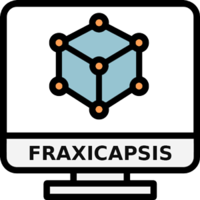FRAXICAPSIS

A forest demo-genetic model to simulate Fraxinus excelsior stand growth under Ash dieback disease with a forest genetic model.
(Under development)

FRAXICAPSIS is a forest growth model designed to simulate the development of ash stands impacted by dieback disease. It integrates the genetic background of disease resistance along with other growth and climate parameters.
In OptFORESTS we use FRAXICAPSIS to explore Ash stand development under various management scenarios, incorporating different levels of intervention for disease management.
We also use FRAXICAPSIS in advising local forest growers on the management of Ash stands with respect to thinning (removal of disease affected trees) and regeneration (planting of resistant genotypes).
Main model information
FRAXICAPSIS has a user-friendly graphical interface in English. It can be used:
- To model the growth of ash (Fraxinus excelsior) trees under the influence of Ash dieback (ADB) and potentially other tree species with similar growth and disease outbreaks
- Simulate the development of ash stands under different intensities of dieback
- For teaching and training purpose
Fraxinus excelsior
Yes
Ash in monoculture stands and in mixed stands if the growth parameters for the other species are known
Albin Lobo, University of Copenhagen, Denmark
alo@ign.ku.dk
Additional model description
- Individual Tree Growth Model, Tree-Tree Interactions, and Stand Dynamics
- Stand level disease impact model on growth and/or mortality
- Fecundity model, Male and female proportion, how much offspring the father tree sired and seeds the mother tree produced, geneflow, etc.
- Variation in resistance to ADB infection among ash genotypes
- Parent-offspring correlation in ADB infection resistance
- Yield tables for ash trees in Denmark, initial individual tree growth simulation in SILVA platform
- Empirical data from field phenotyping as well as molecular studies
- Initial stand composition, i.e. mixture of resistant and susceptible genotypes
- Management scenario, i.e. thinning or sanitary cuts
- Growth trajectory of individual trees with different levels of resistance to ADB in terms of height, diameter, crown dimensions, etc.
- Genotype composition in the ash stands under the simulated management scenarios.